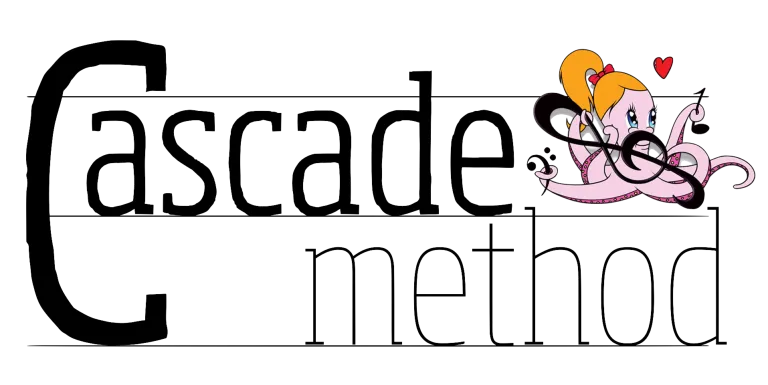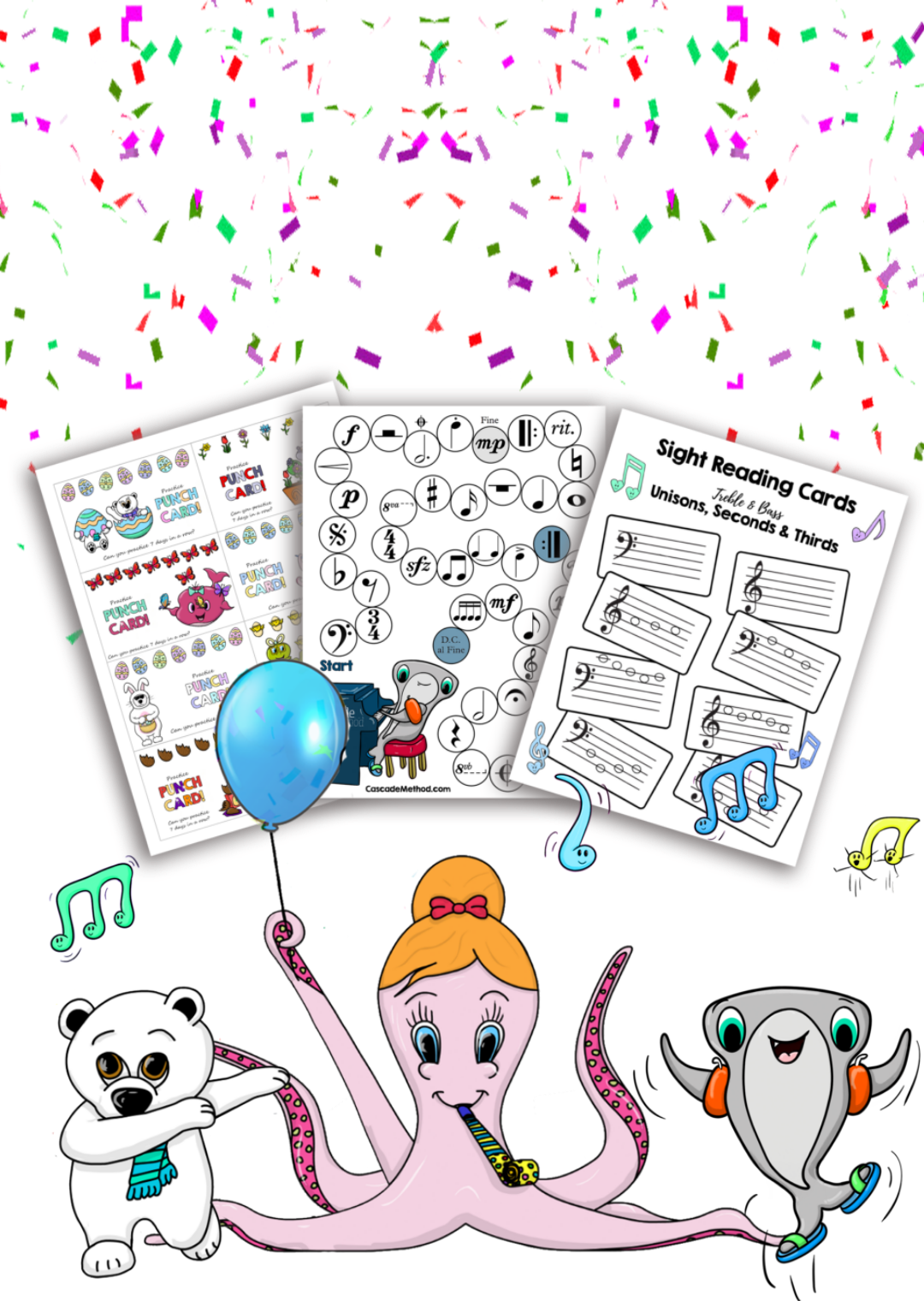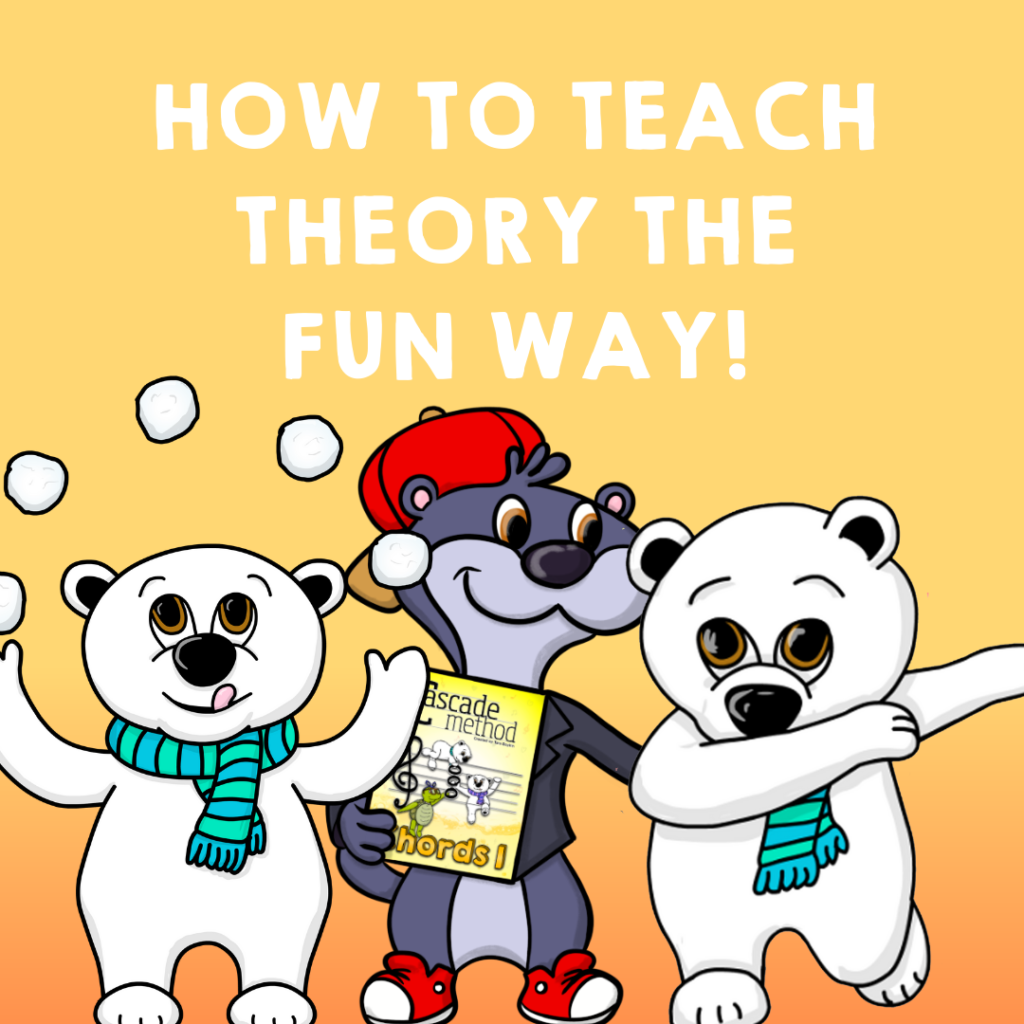
How to Teach Theory the Fun Way
What if there was a way you could learn a variety of proven methods to start teaching theory the fun way? It’s so important to grasp an understanding of music theory, yet so many teachers are intimidated to teach it or don’t understand it themselves!
If you’re looking for fun piano teaching techniques and resources, you are in the right place! In the Cascade Method Teacher Training Program, you will be given all the tools and video instructions necessary to learn everything there is to know about theory. You’ll be able to incorporate these techniques into your piano lessons in a fun and entertaining way that your students will LOVE!
In this blog, we’ll break down all the necessary resources and tools you’ll need to not only teach theory to your piano students but also gain confidence in your own understanding of it!
Why is Music Theory important?
I’ve had several piano teachers within the program ask me about music theory and if it’s something I provide instruction on in the program. The answer is… MEGA-YES! Part one and two of the program provide a deep-dive understanding of The Cascade Piano Theory Book (which you receive for FREE as a member of the program)! Needless to say, I value the understanding of music theory.
I like to think of learning theory as learning the “skeleton” of music; as in, understanding the structure of each piece of music.
When you understand theory, you can analyze and understand the music as a whole, rather than just a thousand different notes. Oftentimes, I’ll sit down with a student and ask them what a specific measure looks like to them and what family of notes it is in. Most likely, the piece makes up a family of a certain chord or a certain scale. When you can determine this yourself, you literally understand where the music comes from! When you grasp that, it makes learning music so much easier!
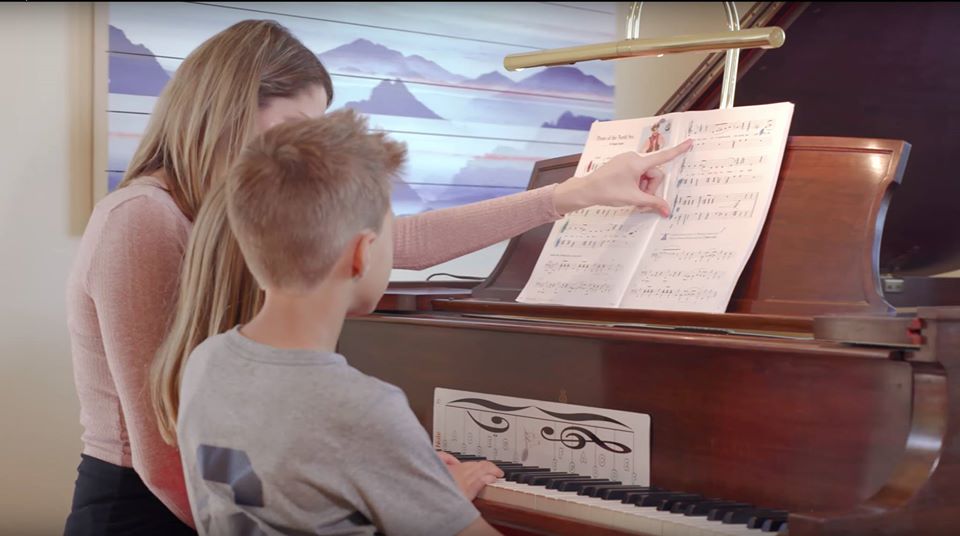
Let’s take learning keys for example. Believe it or not, learning keys is a theory concept! When you learn keys, you are learning what “key” a piece is in! To understand that, you have to know the key signature and know how many sharps or flats are involved in that key.
This will help you determine what white or black notes are going to be played throughout the entire piece! This is an elementary way to explain theory but this is what it’s all about! When you understand all these little theory concepts, you understand music so much better. That’s what I want for all my students and that’s why I teach theory!
How Cascade Method Teaches Theory The Fun Way
To teach theory the fun way, you need the Cascade Piano Theory Book! Fun fact: This was the first book ever released by The Cascade Method! The piano theory book ties directly with the teacher training program, which is why theory is such a prominent topic discussed in the online program!
This book is filled with 76 pages of theory concepts that your students will master quickly while still having fun! This method develops advanced skills without students realizing they are actually learning theory!
Below are all the tools and knowledge your students could gain from this book:
- Finger dexterity
- Rhythm
- Dynamics
- Musical Terms
- Tempo Terminology
- Chords
- Scales
- Chord Progressions
- Intervals
- Sight Reading
- Ear Training
- Inversions
- Improvisation
- Composition
Read on below as I walk through a couple of the theory concepts specifically taught in the book and exactly how I teach it to my students!
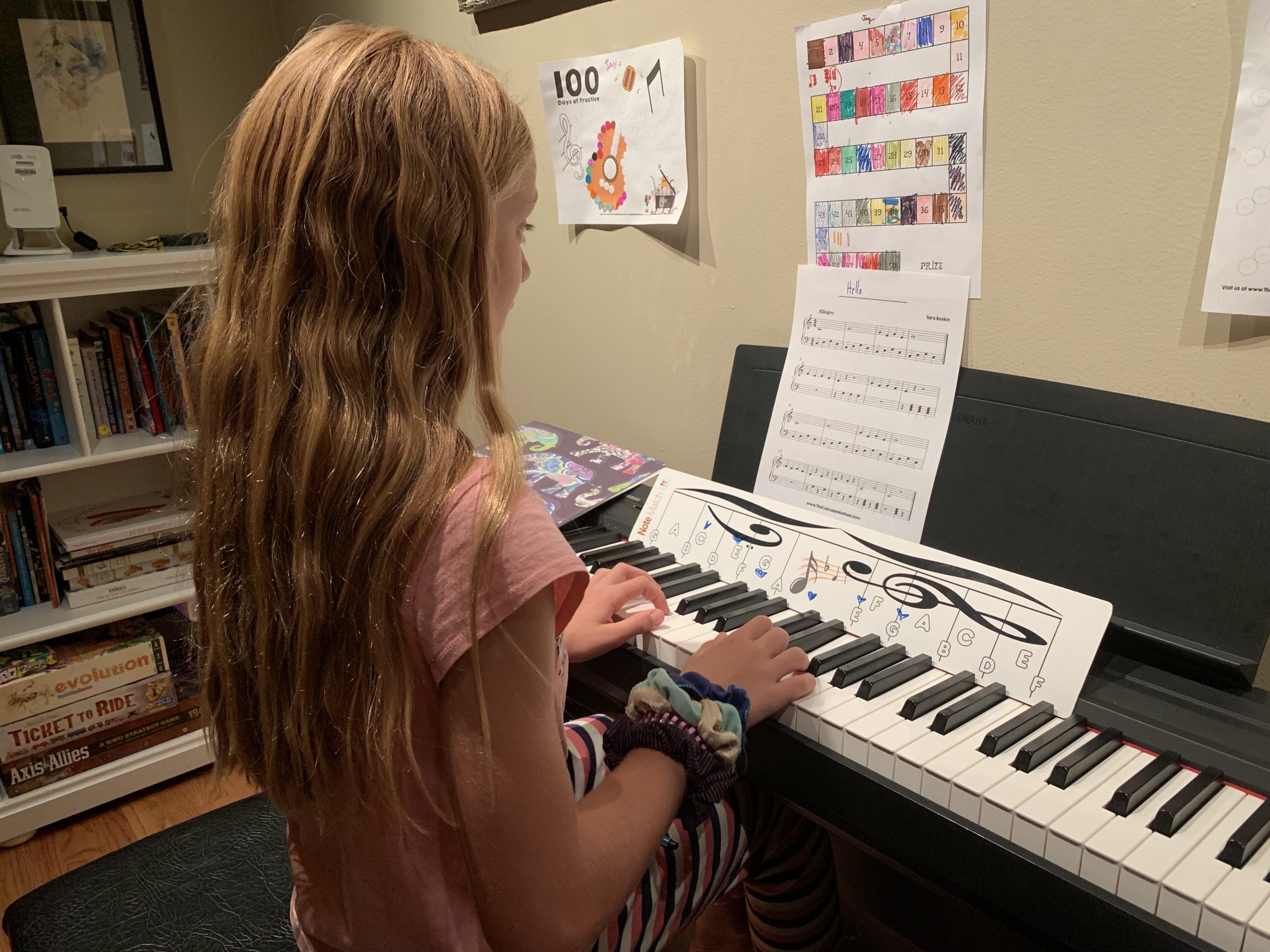
Teaching Theory Concepts: Using Chords
When we’re analyzing a specific piece and it’s a chord, I help my students to see it in a bigger picture so the piece makes more sense. Little do they know, when they master this concept, they’re using theory! If it’s a chord in the piece, I’ll have them notice if it’s in root position, if it’s an inversion, or if all the notes are moving up or down in a linear fashion (if so, that’s a scale)! Once students start to see the pattern, they understand the piece so much more and can play it quicker!
To specifically help with chord knowledge, the Cascade Method Chords 1 Book is the way to go! A four-page framework is given for each root position chord on the piano! Read this blog to learn more about the chords book!
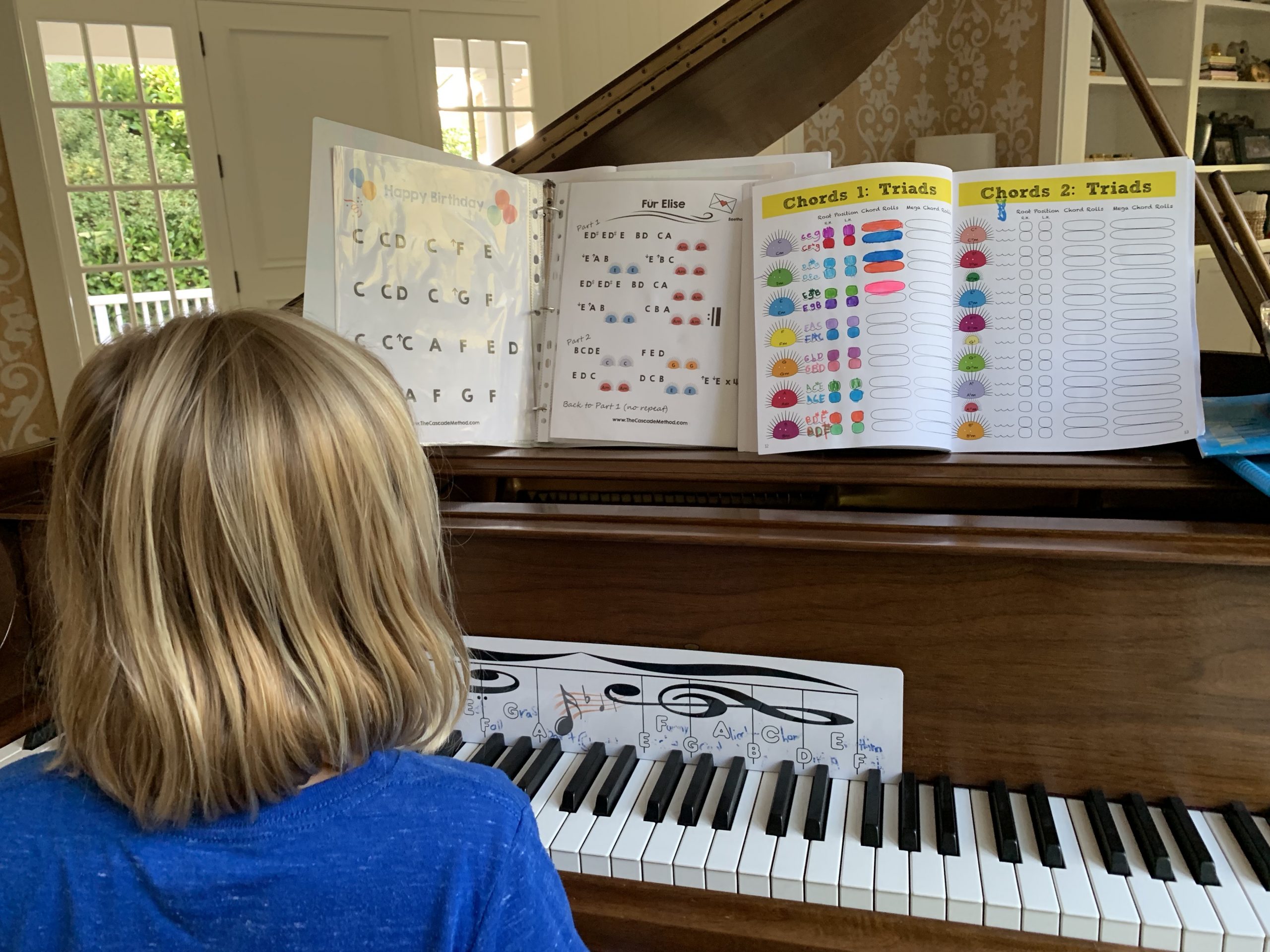
Teaching Theory Concepts: Using Scales:
Scales have a reputation of being boring but I show my students how to learn scales in a fun way and explain to them why they’re actually really important to understanding a piece! When you understand scales, you start to see the piece as a part of a family rather than several individual notes.
With the Cascade Method, we use scales to learn improv but also to understand music. Every piece of music has a key and whatever key that piece is in uses that scale! For example, if you are in the key of E major, that means the piece uses all the notes of an E major scale. If you know all the notes, then you won’t have nearly as much trouble learning the piece! You’re seeing it as a bigger picture!
With all that said, we create student duets through teaching scales. Once I teach them a scale, we improvise and actually write a duet using that student’s name! Improvisation and composition is the goal for every pianist. Without knowing how scales and chords fit within a piece, it would be otherwise impossible to do these processes. You have to have theory knowledge in order to improvise or compose!
In this video, I teach one of my students, Talia, how to improvise using a G minor scale. With the help of the Cascade Theory Book, you’ll see how I teach her the scale, as well as how to figure out the flats. Once it’s written out, she learns how to physically play it on the piano. When she does this correctly with her right hand and then her left, she can color the corresponding shape on the left page of the Cascade book, because the right page is where the scale is written out. See the images below to take a better look at the worksheets in the theory book! ??
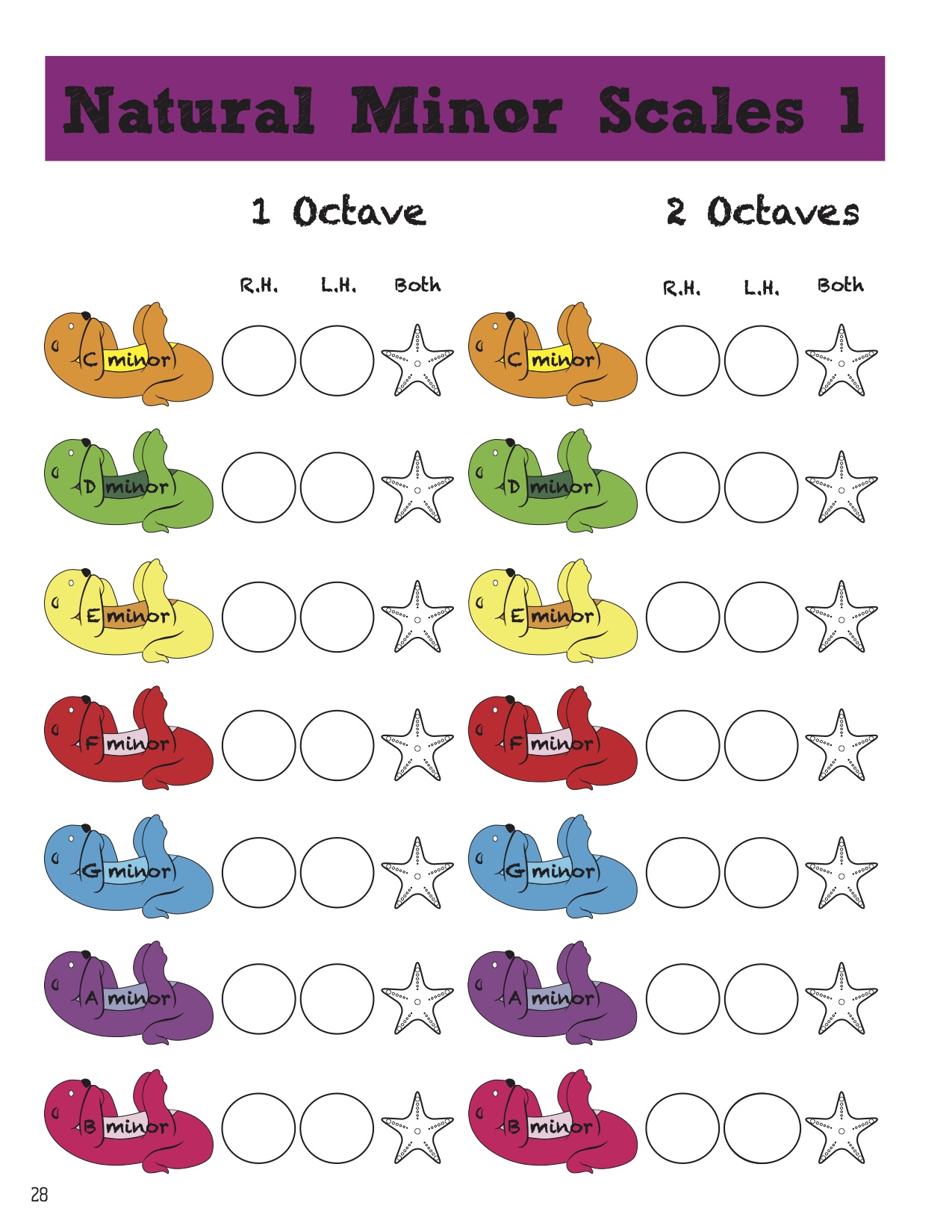
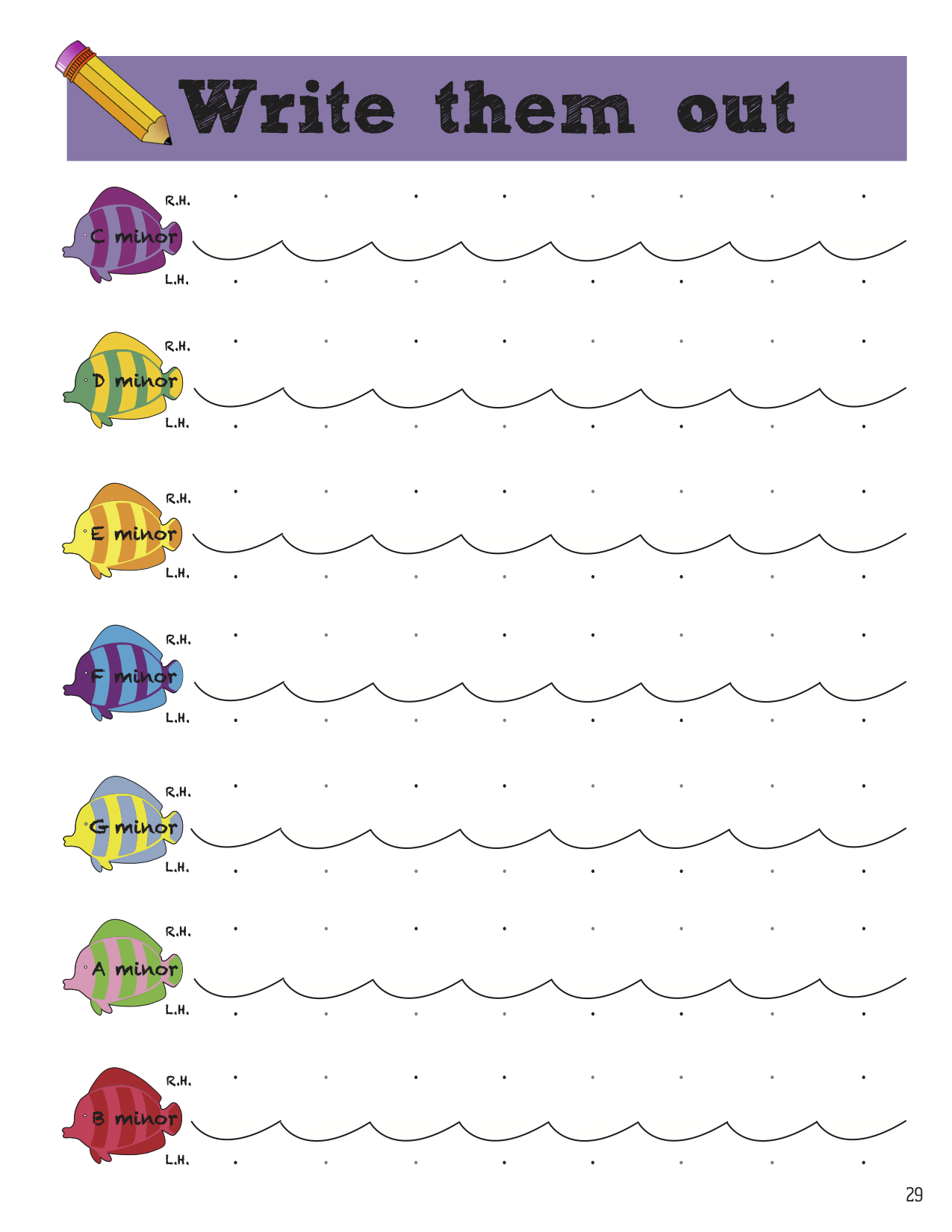
Then, comes the fun part: Improv! In the video below, you’ll see Talia implement the knowledge she learned about the G minor scale and use it in the duet we improvised!
Want to know something really exciting? We have a Student Duets Book that is FILLED with duets inspired by OUR students! The best part is all the duets have been recorded and released to all major music platforms! All the duets are available on Spotify, Apple Music, or right here!
The Tools and Methods You Need to Teach Theory the Fun Way
There is a way you can teach theory in a fun way! Below, I have created a list of must-haves to teach fun theory concepts for your students!
However, maybe your students aren’t completely ready to learn theory. The Beginner Piano Book is what I like to consider “Pre-theory Knowledge!” This book is about learning all the names of the white keys which has to be understood in order to learn more advanced theory concepts.
Grab the Student Beginner Book here!
Teaching Theory the Fun Way Checklist:
1. The Cascade Method Piano Theory Book
We obviously explained this in the above section but if you’re skipping around a bit, here’s the brief reason for needing this book! The Cascade Method Piano Theory Book helps students to master new concepts in a fun way. This method develops advanced skills without students realizing they are actually learning THEORY! This book is intended for pianists ranging from beginners to composers!
Purchase the theory book on Amazon or our Online Shop!
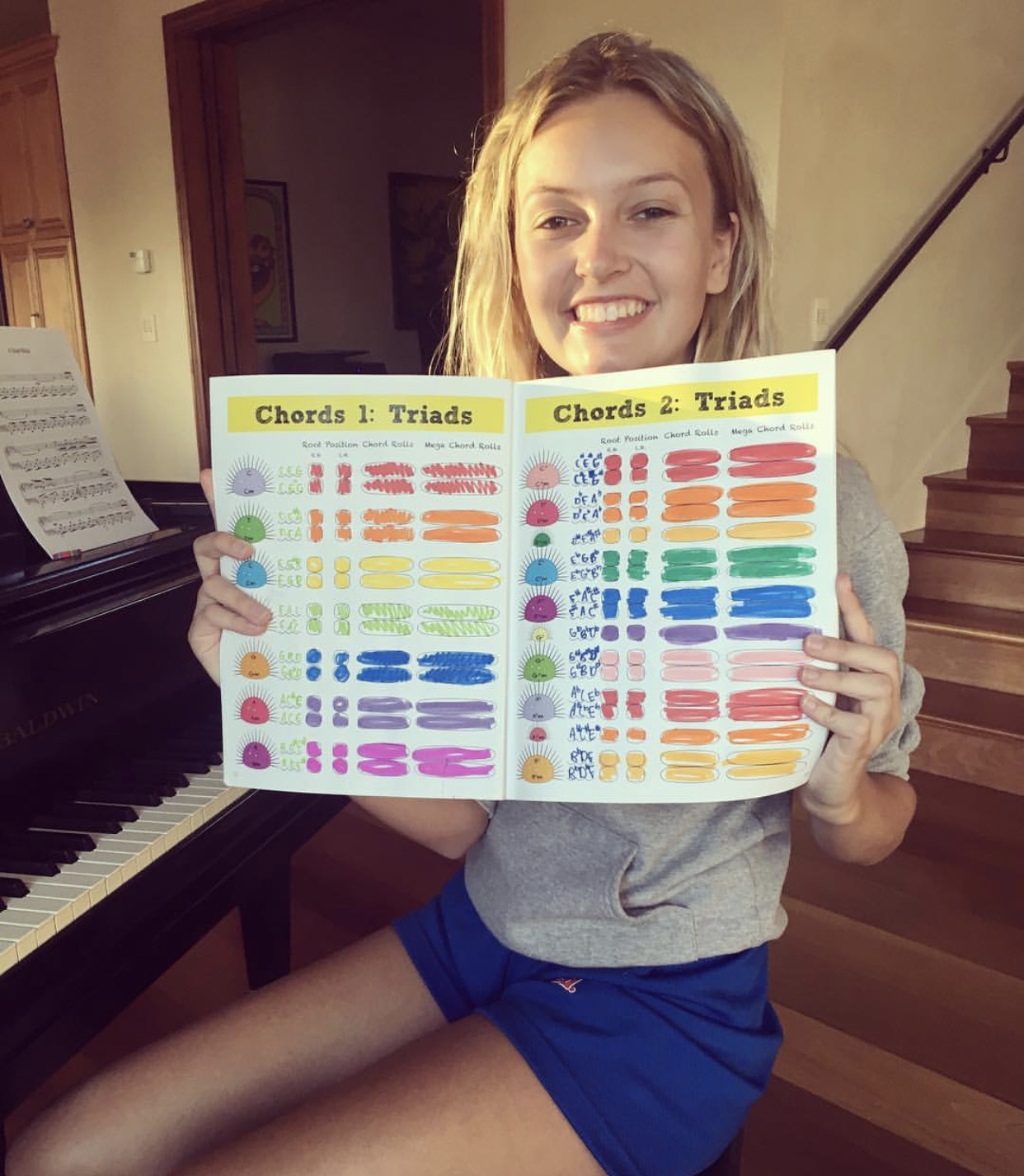
2. The Student Duets Book
This book teaches students how to learn scales and play duets using a specific scale. Scales are oftentimes considered “boring” – however, this book allows students to improvise and compose, which makes scales fun!
Purchase the Student Duets Book on Amazon or our Online Shop!
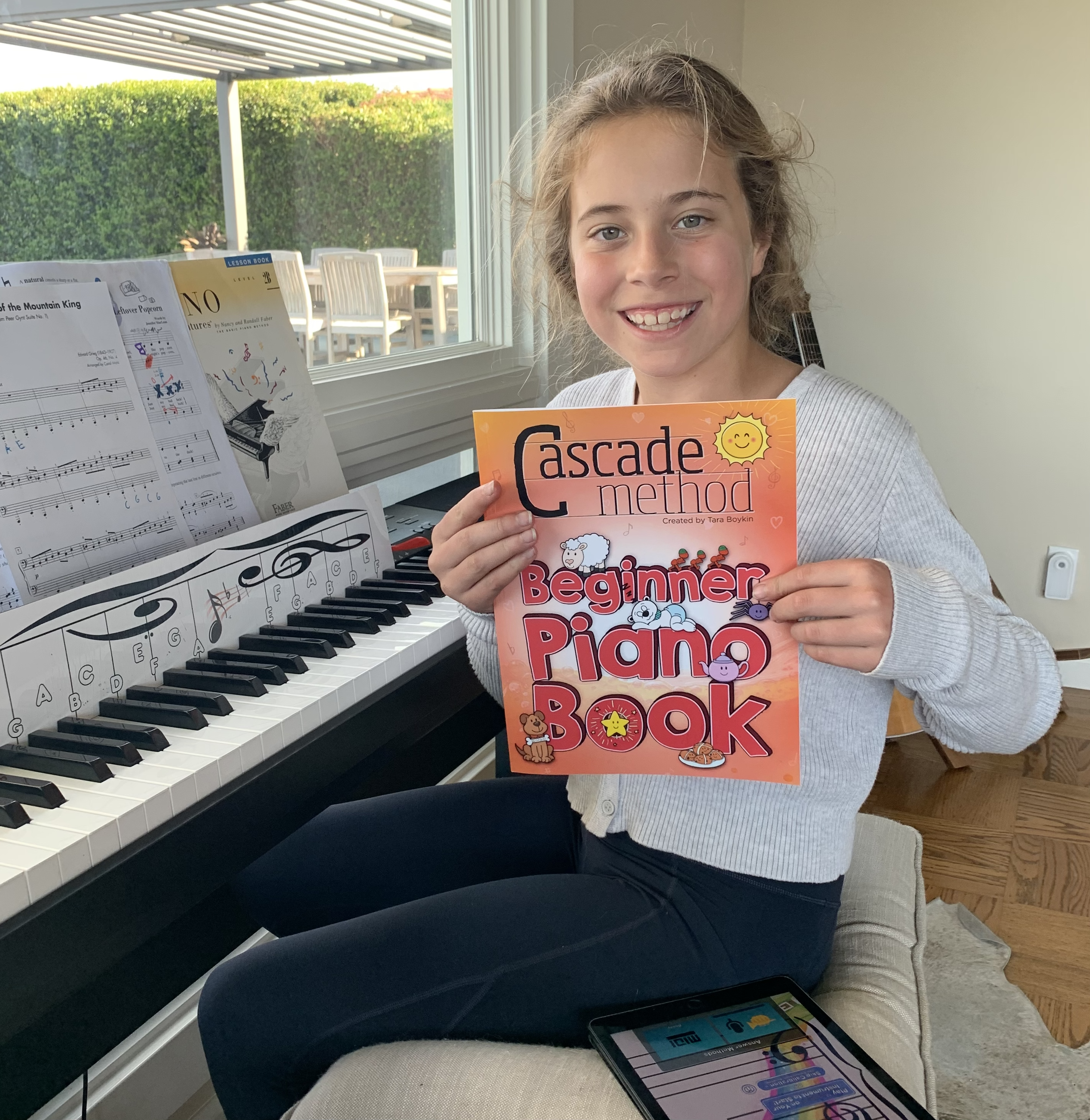
3. Download The Student Duets Playlist:
This pairs with the Student Duets book; however, you can start using these duets with your students now – with or without the book! These duets are taught through the Cascade Method Pop Song Method (or in other words, ear training!)
You can now listen to all the student duet recordings on your preferred music platform!!! Download now on Spotify, Apple Music, or listen here!
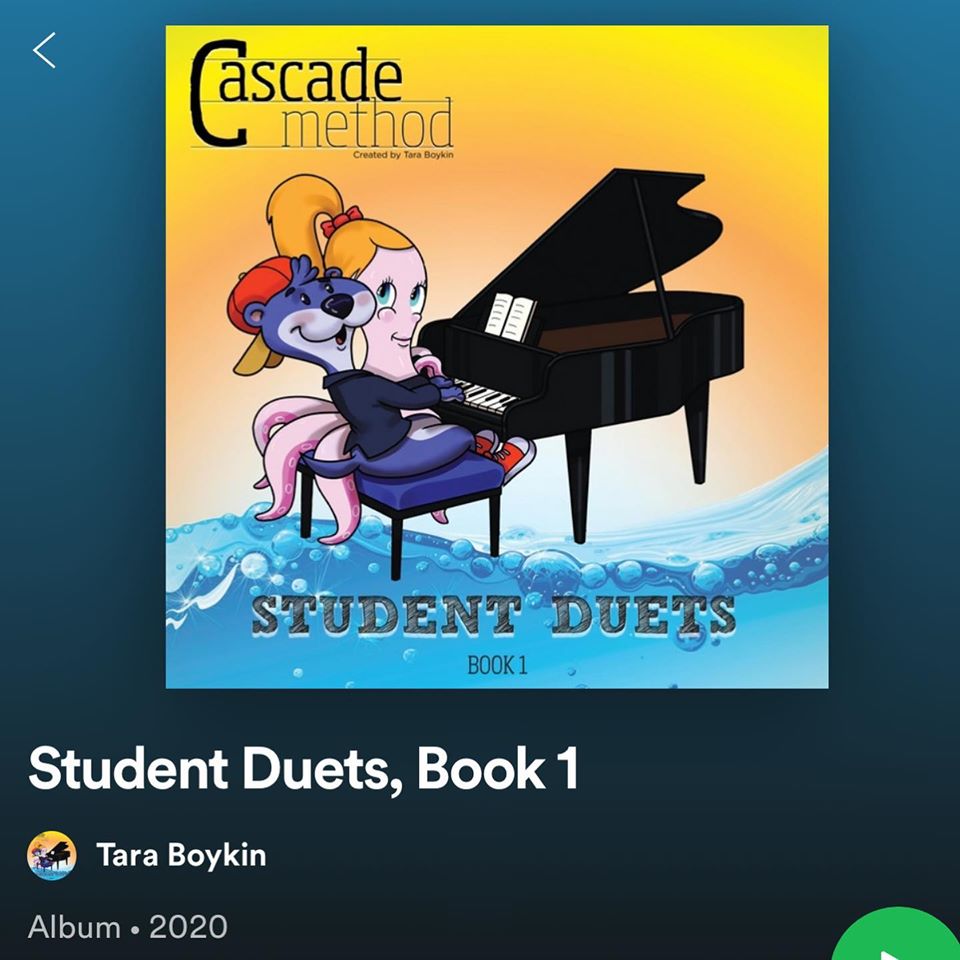
4. NoteMatch:
NoteMatch is a piano reading tool that every student needs in order to read notes with ease! This tool is helpful at all times but especially when learning chords, scales, and notes!
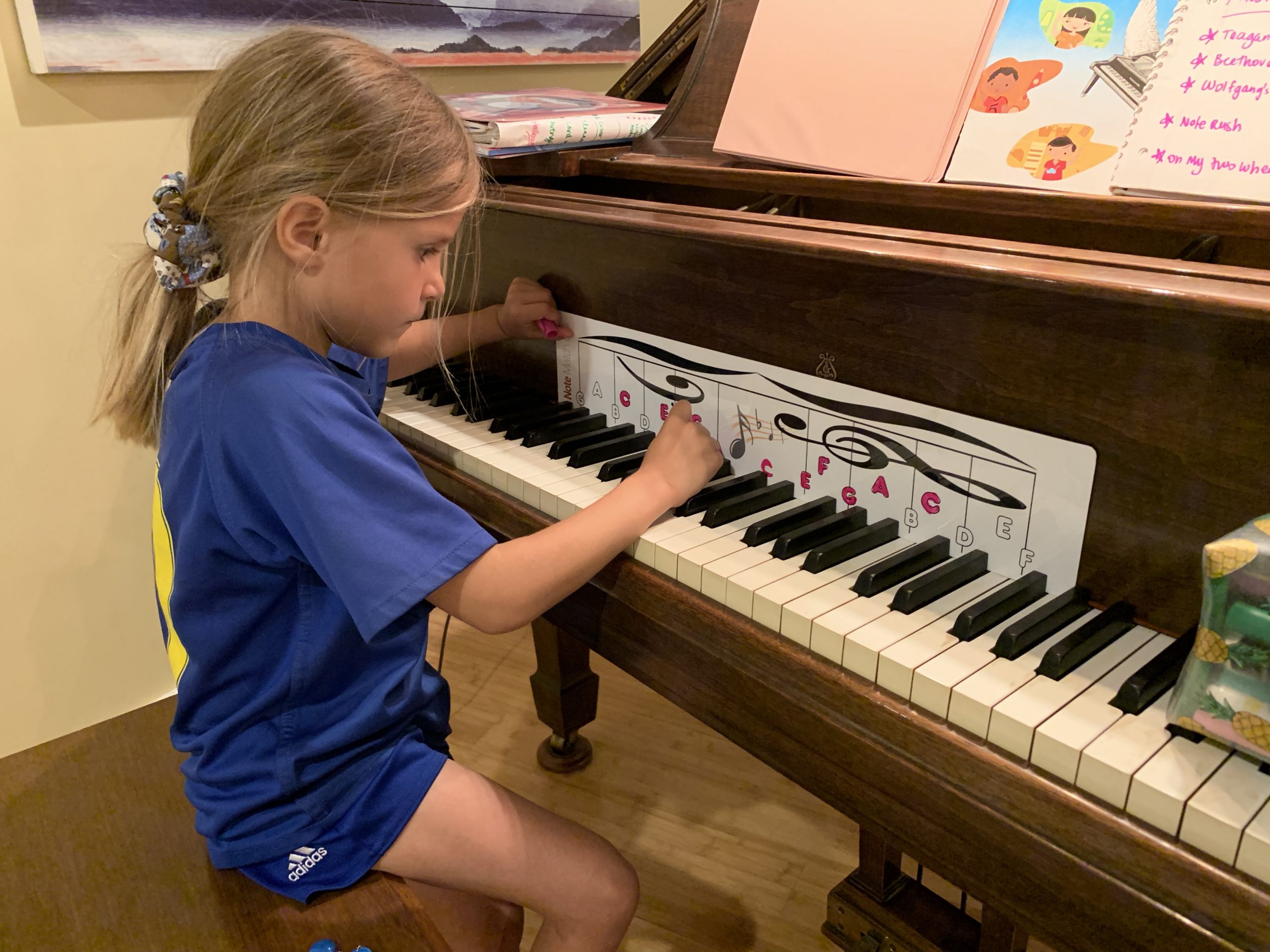
5. The Teacher Training Program:
To save the best for last… if you really want to be confident in your instruction of theory and learn all the other fun techniques for teaching the piano, the teacher training program is for you! This online program is a combination of in-depth lectures and video instruction that advises piano teachers on a fun way to teach the piano. The amount of resources and teaching methods is INSANE!
Learn more about the Cascade Method Teacher Certification today!
Theory isn’t as complicated and intimidating as people make it out to be! With the right instruction, you can understand theory easily and introduce it to your students in a fun way!
Want to see more improv?
Here are some of my favorites from over the years! 
Summer improvising in D minor!
This is one of my newest students who was actually on the verge of quitting piano! As you can see, happiness is written all over her face as we improvise in D minor! Check this out – she killed it!
Sawyer improvising in A minor!
An older video but still a goodie! Would you believe me if I said that Sawyer was a beginner student when this was recorded? He learned how to improvise A minor in the THIRD piano lesson of his entire LIFE!!!!! How incredible is that!?
Needless to say, this method works!
Are you ready to start teaching theory the fun way? Grab your checklist and enroll in the Teacher Training Program today!
Want more resources like this delivered straight to your inbox?! Sign up for our newsletters!
